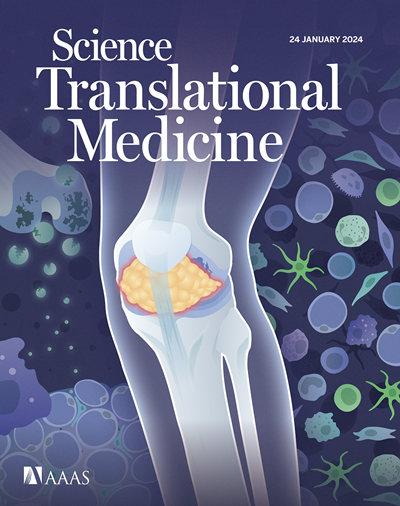Bayesian modeling for analyzing heterogeneous response in preclinical mouse tumor models
IF 15.8
1区 医学
Q1 CELL BIOLOGY
引用次数: 0
Abstract
In anticancer research, tumor growth measured in mouse models is important for assessing treatment efficacy for a treatment to progress to human clinical trials. Statistical analysis of time-to-event tumor volume data is complex because of heterogeneity in response and welfare-related data loss. Traditional statistical methods of testing the mean difference between groups are not robust because they assume common responses across a population. Heterogeneity in response is also seen in the clinic, and consequently, the assessment of the treatment considers the diversity through classification of the individual’s response using the RECIST (Response Evaluation Criteria in Solid Tumors). To provide a comparable and translatable assessment of in vivo tumor response, we developed a statistical method called INSPECT (IN vivo reSPonsE Classification of Tumors) for analyzing heterogeneous responses through Bayesian modeling. This method can classify individual tumor behaviors into the categories of nonresponder, modest responder, stable responder, and regressing responder. Using both published and simulated data, we show that INSPECT methodology is more accurate and sensitive than existing methods with respect to balancing false-negative and false-positive rates. A case study demonstrates the value of INSPECT in drug projects for supporting the translation of drug efficacy from the preclinical phase into clinical trials. We also provide a package, “INSPECTumours,” that launches a web interface to enable users to conduct the analysis and generate reports.
用于分析临床前小鼠肿瘤模型异质性反应的贝叶斯模型。
在抗癌研究中,在小鼠模型中测量的肿瘤生长情况对于评估治疗效果非常重要,以便将治疗方法推进到人体临床试验中。由于反应的异质性和与福利相关的数据丢失,对从时间到事件的肿瘤体积数据进行统计分析非常复杂。测试组间平均差异的传统统计方法并不可靠,因为它们假定整个群体都有共同的反应。临床中也会出现反应异质性的情况,因此,在评估治疗效果时,要通过使用 RECIST(实体瘤反应评估标准)对个体反应进行分类,从而考虑到反应的多样性。为了对体内肿瘤反应进行可比较和可转化的评估,我们开发了一种名为 INSPECT(体内肿瘤反应分类)的统计方法,通过贝叶斯模型分析异质性反应。该方法可将个体肿瘤行为分为无应答、适度应答、稳定应答和回归应答四类。通过使用已发表的数据和模拟数据,我们表明 INSPECT 方法在平衡假阴性率和假阳性率方面比现有方法更准确、更灵敏。一项案例研究证明了 INSPECT 在支持药物疗效从临床前阶段转化为临床试验的药物项目中的价值。我们还提供了一个软件包 "INSPECTumours",该软件包可启动一个网络界面,使用户能够进行分析并生成报告。
本文章由计算机程序翻译,如有差异,请以英文原文为准。
求助全文
约1分钟内获得全文
求助全文
来源期刊

Science Translational Medicine
CELL BIOLOGY-MEDICINE, RESEARCH & EXPERIMENTAL
CiteScore
26.70
自引率
1.20%
发文量
309
审稿时长
1.7 months
期刊介绍:
Science Translational Medicine is an online journal that focuses on publishing research at the intersection of science, engineering, and medicine. The goal of the journal is to promote human health by providing a platform for researchers from various disciplines to communicate their latest advancements in biomedical, translational, and clinical research.
The journal aims to address the slow translation of scientific knowledge into effective treatments and health measures. It publishes articles that fill the knowledge gaps between preclinical research and medical applications, with a focus on accelerating the translation of knowledge into new ways of preventing, diagnosing, and treating human diseases.
The scope of Science Translational Medicine includes various areas such as cardiovascular disease, immunology/vaccines, metabolism/diabetes/obesity, neuroscience/neurology/psychiatry, cancer, infectious diseases, policy, behavior, bioengineering, chemical genomics/drug discovery, imaging, applied physical sciences, medical nanotechnology, drug delivery, biomarkers, gene therapy/regenerative medicine, toxicology and pharmacokinetics, data mining, cell culture, animal and human studies, medical informatics, and other interdisciplinary approaches to medicine.
The target audience of the journal includes researchers and management in academia, government, and the biotechnology and pharmaceutical industries. It is also relevant to physician scientists, regulators, policy makers, investors, business developers, and funding agencies.
 求助内容:
求助内容: 应助结果提醒方式:
应助结果提醒方式:


